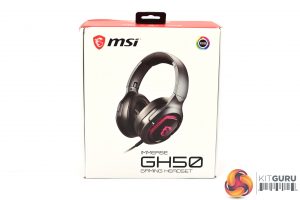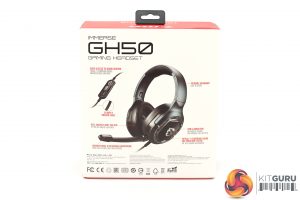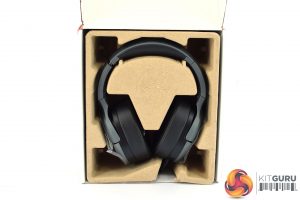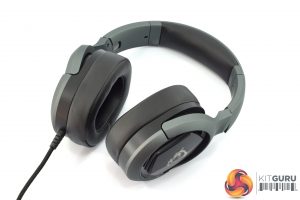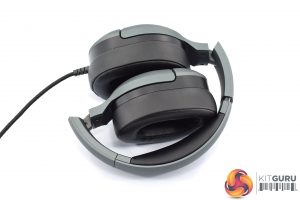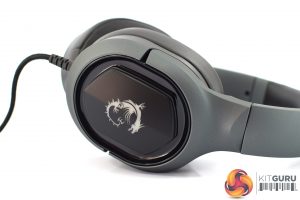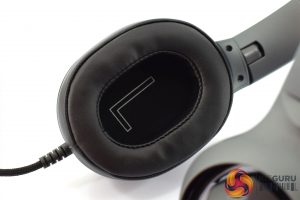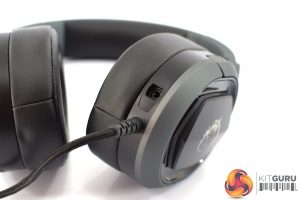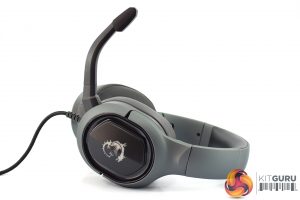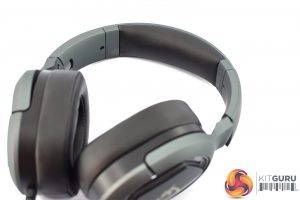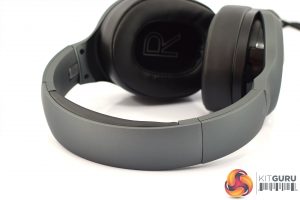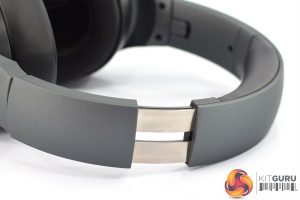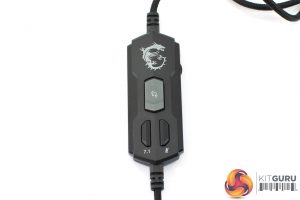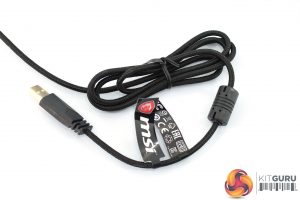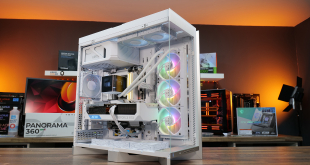The MSI Immerse GH50 ships in a clean white box. A large image of the headset is visible on the front, and on the back we have a number of key features that MSI has highlighted.
Opening up the box, we can see the headset comes presented in a cardboard surround to keep it safe during transit.
As for accessories, we get a small quick start guide, the detachable microphone, and then a soft black carry case for the headset.
Moving onto look at the GH50 itself, the first thing to note is the grey and black colour scheme – it's very colour neutral and doesn't scream ‘gamer', which I personally quite like. We'll take a closer look at the different areas of the headset below, but another initial point to make is that the GH50 can fold up to make it easier to transport.
Starting with the back of the earcups, these are made of black plastic with the MSI logo positioned right in the middle of each cup. The yokes and surrounding headband are also made of plastic, this time coloured grey. Incidentally, the MSI logo lights up once the headset is plugged in.
On the inside of the cups, we can see MSI has gone for leatherette ear cushions, which MSI describes as ‘soft, fluffy.' It is worth noting that these cushions are not removable. Right and left are also clearly marked on the fabric covering the driver housing.
There's no on-ear controls on the earcups, but as the mic is detachable we can see a small 3.5mm port on the left cup. The mic plugs in here and its position can be adjusted slightly, but it's not quite as flexible as some other ‘goose neck' boom mics I've used in the past.
Moving onto the headband, the inside is padded with more leatherette-covered foam, while the outside of the band is just plain grey plastic.
The exterior of the headband is indeed made from plastic, but there is a metal slider on the inside providing a bit of rigidity. This is also how the headset expands in size – there's no size markings but you can clearly feel each step as the slider expands.
We already mentioned there are no on-ear controls, but there is an in-line controller. This has several functions, including a simple volume wheel on the side of the controller, and then three buttons on the front. The large grey button is actually a slider which is used to toggle the ‘vibration system' (more on that on the next page), and underneath that we have a mic mute button and a button to toggle the virtual 7.1 surround sound.
The cable itself is braided and measures 2.2m. It terminates with a USB port and is only supported on Windows PCs.
 KitGuru KitGuru.net – Tech News | Hardware News | Hardware Reviews | IOS | Mobile | Gaming | Graphics Cards
KitGuru KitGuru.net – Tech News | Hardware News | Hardware Reviews | IOS | Mobile | Gaming | Graphics Cards


